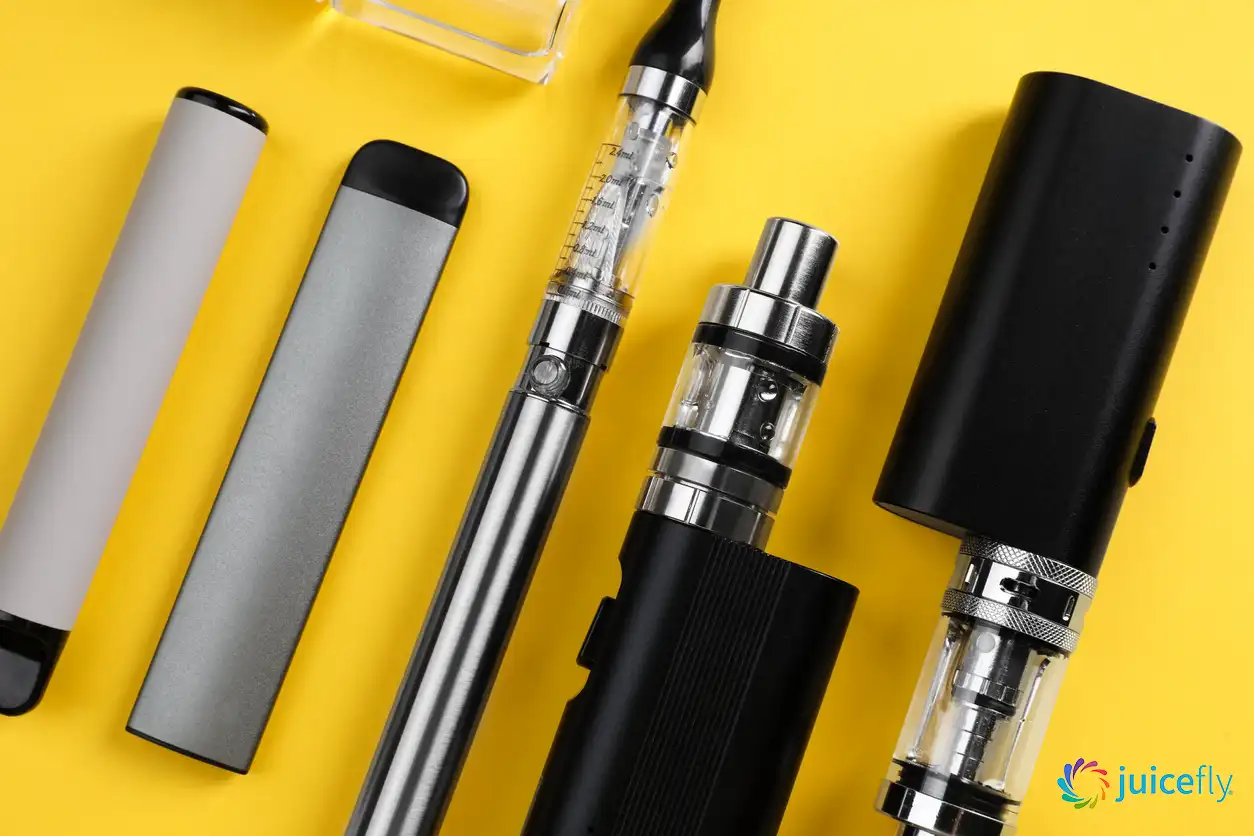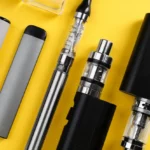
Vape Chargers: A Comprehensive Guide to Different Types and How to Use Them
 2023-05-17T19:08:32+00:00
in vapes
2023-05-17T19:08:32+00:00
in vapes
To the tech-minded reader: if you’re looking for a comprehensive guide on different types of vape chargers and how to use them, you’ve come to the right place! We’ll cover everything from the basics about the types of vape chargers to using them securely and effectively. Let’s dive right in and get a better understanding of how these work so you can get the best experience with your vape charging device!
Types Of Vape Chargers
Vape chargers come in many different shapes and sizes, depending upon the needs of the user. Furthermore, understanding the differences between vape charger types can go a long way toward ensuring that your device is charged safely and efficiently. Generally speaking, vape chargers can be broken down into two primary categories – USB and wall chargers.
USB Chargers are small and portable, making them ideal for those who need to charge their devices while on the go. These chargers usually come with an array of different port types including mini-USB, micro-USB, Lightning connector and Type-C USB ports. Furthermore, USB chargers tend to support a wide range of input voltages – typically ranging from 3.6 Volts up to 24 volts – and provide varying levels of output current too ranging from 500mA all the way up to 10 Amps+.
Wall chargers on the other hand provide a more ‘static’ charging solution and tend to be larger in size due to their AC/DC power adapters being integrated into them. Most wall chargers have built-in safeguards such as overcharging protection and are capable of charging several devices simultaneously thanks to their multiple ports. Furthermore a majority of wall activities today also output a higher wattage than USB chargers which makes them perfect for charging bigger devices such as laptops or tablets which require more power.
No matter what type of vape charger you opt for, it is paramount that you always read through the user manual first (especially if your device has a lithium-ion battery) so that you are able to select the safest possible charging option that suits your device perfectly.
Charging Cable and Battery Packs
When it comes to charging your vape device, a good cable and battery pack is essential. In order to ensure the best performance from rechargeable vape batteries, it makes sense to invest in one of the many available options. But, while premium cables are often considered more reliable, basic ones can also do the job providing they securely fit into the device and feature high-grade connectors.
Battery packs offer an easy solution for on-the-go charging. Specifically designed to store several batteries at a time, these packs are typically fitted with a rubber seal that helps maintain the charge of each battery contained within. For vapers who find themselves out and about for extended periods of time, battery packs come highly recommended. That said, there is also the potential cost aspect; some models can be expensive depending on their capacity and quality.
Compromises may need to be made when choosing between a cable or battery pack; some users may opt for a cheaper cable but invest in a more reliable battery pack. Ultimately, the decision depends on how frequently – and where – you use your vape device as well as whether you care more about convenience or reliability.
No matter which option you choose though, proper handling is mandatory; by ensuring that all connections are properly secured before use and making sure the device does not overheat during charging sessions, you can help maximize your vaping experience and get the most out of your device’s battery power.
In any case, both cable and battery packs are invaluable additions to any vaper’s kit — so next up we’ll talk about USB chargers and micro-USB chargers; two equally important components that help ensure easy and safe charging on-the-go.
- According to a 2019 survey, it was found that over 90% of vapers use standard micro USB wall chargers for their devices.
- The majority of vape device batteries require 3.7V or 4.2V to be fully charged, which is offered with all standard USB charger cables.
- A battery charger designed specifically for vaping devices will offer both voltage and amperage levels specific to the model being used.
USB Chargers and Micro-USB Chargers
When it comes to charging your vape device, USB and Micro-USB chargers are one of the most widely available options in the market. As their name suggests, these chargers provide power through either a standard USB or a Micro-USB port respectively. USB chargers are fairly well known and can often be found at an electronics store, convenience store, or online.
They typically consist of an output port to connect with the vape device in question, an input port to plug into a USB wall charger or laptop/computer, along with indicator lights that communicate to the user when the device is finished charging. They come in various sizes and colors as well, making them quite accessible for whatever your needs may be.
As for Micro-USB chargers, they are very similar to the USB charger in terms of its overall design and features, however usually come with shorter cords. This makes them ideal if you are trying to charge your vape device while still keeping it close by. Some pen style vaporizers come with their own dedicated micro-USB charger as well; making it easier for users looking for a specific part.
The main difference between these two types of chargers really lies in their respective types of ports and cords they come with; allowing users to choose what best fits their device and lifestyle.
Essential Highlights
USB and Micro-USB chargers are the most commonly used charging options for vape devices. They come in different sizes and colors, with USB chargers having a longer cord while Micro-USB chargers have shorter cords. Whichever type of charger one uses, it’s important to understand its individual features and use it properly for optimal care of the device.
How to Use Vape Chargers
Using the right charger for your vape device is essential to ensure proper and safe charging. USB chargers and micro-USB chargers are often the most common type of charger, making them widely accessible and compatible with many different devices. However, different types of vape devices require their own special chargers and should not be confused with a USB or micro-USB charger.
When it comes to using a vape charger, familiarity is key. Read product manuals carefully to ensure you are using the correct capacity voltage and current for your device. Make sure your battery is compatible with your charger before plugging in. Once ready, plug your charger into an appropriate power source, then connect to your battery. It is important to note that most devices will not turn on while they are being charged, so it’s important to monitor the battery to make sure it is recharging correctly. Most chargers come equipped with indicators that tell you when a full charge has been reached or there may be a light indication visible through the port window.
It may be tempting to use other charging sources such as laptop computers or car adaptors, but these can have serious safety risks and are not recommended. In addition, if you must travel with your charger, make sure you use the manufacturer’s original packaging as some carry hazardous materials regulations when traveling by air or sea.
Knowing how to properly use a vape charger is an important part of owning a safe and enjoyable vaping experience. By understanding the various types of vape chargers available and following appropriate safety guidelines, users can ensure their device remains in proper working condition for as long as possible.
Step-by-Step Instructions for Safe Charging
Now that you are familiar with how to use vape chargers, taking the next step and safely charging them is key. There are some important steps that you should take to ensure that the charging process is done correctly and efficiently.
First and foremost, make sure that you are using the correct charger for your device. Interchangeable components can cause major issues due to power output discrepancies. If something does not feel right, it is generally recommended to go by the specific manufacturer’s instructions first and foremost or speak with a professional vape technician if advice is needed.
Next, keep your vape charger clean in an effort to reduce any risk of short circuiting. Wiping away dust or other debris commonly found on chargers will help extend its life and insure it keeps working properly throughout its lifetime. Additionally, try to avoid contact with liquid as much as possible; water damage is one of the leading causes of problems arising from vape chargers so if anything gets spilled try to clean the area up quickly.
Finally, monitor your charging and never leave your vape unattended while it’s still plugged in. Cooked batteries, which can result from overcharging, can become hazardous if left untended and could potentially cause irreparable damage to both your device and battery.
Benefits of Using Vape Chargers
The benefits of using vape chargers are extensive and often overlooked. For starters, these devices are designed to help ensure the safety of your battery and devices, preventing short-circuiting and damage from overcharging. Vape chargers also make vaping more convenient by allowing you to recharge and use your device while traveling. Additionally, different types of vape chargers can offer different levels of efficiency when it comes to charging time and energy usage.
For instance, modern USB-C chargers offer faster charging speed and higher power efficiency than their predecessor. This means that these newer models can fully charge a battery in a shorter amount of time as well as saving money on energy bills in the long run. Other types of vape charges, such as variable wattage/voltage adapters, may also allow you to adjust the output voltage and wattage of the device while charging to suit your needs. Such features may provide additional benefits such as extending battery life or improving vapour production.
It is also important to consider the quality of the charger when looking for one—high-quality chargers often employ multiple protective mechanisms including temperature sensors, current control systems and automatic shut off protection which can help protect against potential risks associated with misusing or damaging the battery. Furthermore, investing in a well-made charger also helps ensure durability since poor quality components tend to wear out quickly.
